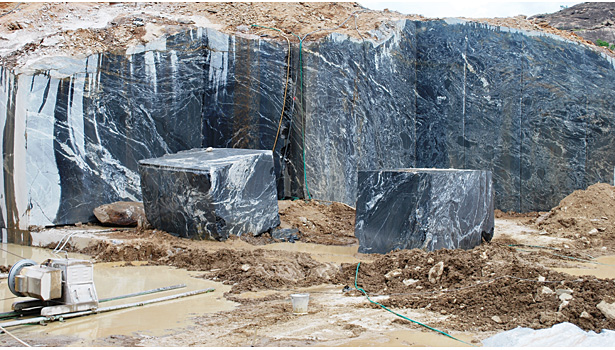Checking Out Granite Quarries in South Africa: A Comprehensive Overview
Discovering the Rich History and Lasting Practices of Granite Quarrying
As we depend on the precipice of discovering the intricate tapestry of granite quarrying, a trip with time exposes not simply the physical act of drawing out rock yet likewise the cultural and historical relevance woven into the extremely material of this technique. From the ancient origins that laid the structure for modern-day quarrying strategies to the sustainable practices that are shaping the future of this market, each sculpt mark on granite surfaces narrates waiting to be discovered (granite quarries in south africa). The heritage of granite quarrying extends far beyond mere removal; it is a testimony to human ingenuity, strength, and the enduring appeal of this impressive stone
Ancient Origins of Granite Quarrying
Dating back to old civilizations, the method of quarrying granite has actually been an integral component of human background and architectural advancement. The earliest evidence of granite quarrying go back to old Egypt, where massive pyramids and detailed sculptures were crafted from this long lasting rock. The Egyptians made use of primitive devices to remove granite blocks from quarries, showcasing the value of this material in their monumental building and constructions.
Moving forward in background, the Greeks additionally made considerable payments to the quarrying of granite. The Greeks utilized granite in numerous architectural marvels, such as temples and statues, demonstrating their ability in shaping and sculpting this sturdy rock. The Romans even more improved the strategies of quarrying granite, using sophisticated tools like chisels and hammers to extract and shape granite for their famous frameworks.
Through the centuries, the practice of quarrying granite has evolved, with modern-day technologies enhancing efficiency while keeping the classic charm of this natural rock - granite quarries in south africa. From old people to contemporary home builders, the tradition of granite quarrying continues to form our world
Advancement of Quarrying Strategies
The development of quarrying strategies has been noted by a continuous development towards better effectiveness and accuracy in extracting granite. Early quarrying techniques included hands-on labor with standard tools such as blades, hammers, and wedges to remove granite blocks from the earth.
In even more current times, the introduction of equipment revolutionized the quarrying market, allowing faster extraction prices and increased efficiency. Technologies such as ruby wire saws, high-pressure water jets, and pneumatically-driven drills have ended up being typical in modern quarries, enabling specific cutting and minimized waste. Advancements in computer-controlled devices and 3D modeling have actually maximized quarrying procedures, leading to minimal environmental impact and enhanced sustainability techniques. As the need for granite remains to rise, the evolution of quarrying techniques stays indispensable to conference sector requires successfully and sustainably.
Cultural Significance of Granite
Granite holds an extensive social relevance across various worlds due to its enduring presence in building work of arts and admired monuments. From the stunning pyramids of Egypt to the elaborate carvings of the Angkor Wat temple in Cambodia, granite has actually been a product of option for expressing majesty and longevity in social heritage. In old Rome, granite columns embellished temples and public buildings, signifying toughness and permanence. The social value of granite extends beyond its physical features; it personifies durability, security, and timelessness, making it a sign of enduring heritages and customs.

Sustainable Practices in Quarrying
Amidst the rich background of granite quarrying and its cultural value lies a growing emphasis on sustainable methods within the market. As environmental understanding and concerns about resource exhaustion have why not find out more actually heightened globally, the quarrying market has actually increasingly accepted sustainable techniques to lessen its effect on the environment and bordering communities.

Additionally, reclamation and rehab of quarry sites post-extraction are essential to sustainable practices. By recovering quarried areas to an all-natural or valuable state, such as developing wild animals environments or recreational rooms, quarriers can offset the ecological impact of their operations and contribute favorably to the local community.
Heritage of Granite Quarrying
With a historical backdrop steeped in workmanship and industrial progression, what sustaining effect has granite quarrying left on the landscape of contemporary society? The legacy of granite quarrying transcends plain removal methods; it has formed building marvels, urban landscapes, and social heritage worldwide. The long lasting nature of granite has made it a preferred selection for monuments, buildings, and infrastructure, standing as a testimony to the skill and virtuosity of visit site quarry employees across generations.
In addition, the economic footprint of granite quarrying can not be overlooked. The sector remains to provide work opportunities and drive local economic climates in areas where granite removal is common. It has also spurred technological advancements in quarrying strategies and devices, resulting in extra effective and sustainable methods.
In terms of sustainability, the tradition of granite quarrying consists of efforts to reduce ecological influences through recovery projects and responsible resource monitoring. By stabilizing economic rate of interests with ecological stewardship, the industry strives to make sure that future generations can remain to gain from this enduring natural source.
Verdict
